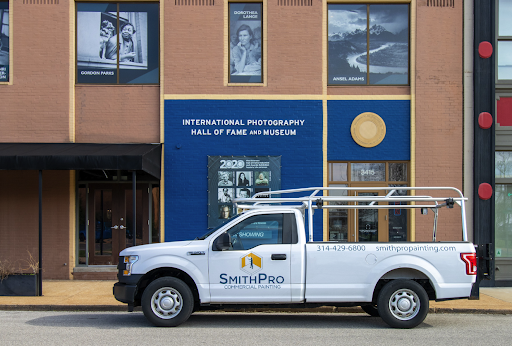Interior design is crucial in creating a welcoming environment for commercial buildings. Two styles that have emerged as popular choices in recent years are maximalism and minimalism. While maximalism is all about bold colors, patterns, and textures, minimalism is known for its clean lines, simple colors, and minimal decor. This blog post will explore these two styles’ history, benefits, and drawbacks.
The History of Maximalism and Minimalism
Minimalism emerged in the 1960s as a reaction to the excessive and opulent designs of the 1950s. The style was inspired by the simplicity and functionality of Japanese design and the Bauhaus movement. The use of simple colors, clean lines, and a focus on function over form characterizes minimalism.
On the other hand, maximalism emerged in the 1980s as a reaction to the minimalist movement. Bold patterns, textures, colors, and eras characterize the style. Maximalism is about making a statement and creating a sense of drama in the space.
Benefits and Drawbacks of Maximalism
Maximalism can be an excellent choice for commercial buildings that want to create a sense of luxury and opulence. Using bold colors, patterns, and textures can create a sense of drama and excitement that attracts customers. Maximalism can also be a great way to showcase the business owner’s personality and create a unique space that stands out from the competition.
However, maximalism can also be overwhelming and chaotic if not executed properly. It can be challenging to balance different patterns and colors without creating a sense of clutter. Maximalism can also be expensive, often requiring high-end materials and custom furniture.
Maximalism Examples
One great example of a maximalist commercial building is the Palms Casino Resort in Las Vegas. The hotel features a bold color scheme of red, black, and white, with a mix of different patterns and textures. The result is a dramatic and exciting space perfect for a Las Vegas casino. Another example is the Ace Hotel in New Orleans. The hotel features a mix of vintage and modern decor, with bold patterns and textures throughout the space. The result is a unique and eclectic space that stands out from other hotels in the area.
Benefits and Drawbacks of Minimalism
Minimalism can be a great choice for commercial buildings that want to create a sense of calm and simplicity. Using simple colors and clean lines can bring a sense of order and serenity to the space, attracting customers. Minimalism is also a great way to showcase the products or services of the business, as it allows them to take center stage.
However, minimalism can also be seen as cold and sterile if improperly executed. It can be challenging to create a sense of warmth and personality in a space that is so minimal. Minimalism can also limit creativity, as it requires a lot of restraint and editing.
Minimalism Examples
One great example of a commercial building that fits minimalism is the Apple Store. The stores feature a simple color scheme of white and gray, with clean lines and minimal decor. The result is a space focused on Apple’s products and services without distractions.

Customer Experience
Commercial businesses’ interior design and paint colors can significantly impact the customer and employee experience. A well-designed space can create a sense of comfort and welcome, while a poorly designed space can create discomfort and unease. Additionally, paint colors can also have an impact on mood and behavior. Bright colors can develop a sense of energy and excitement, while muted colors can create a sense of calm and relaxation. Both minimalism and maximalism can use bright or muted colors, but minimalism is usually associated with muted colors or neutrals, whereas maximalism typically uses bright colors.
For customers, the interior design of a commercial business can influence their perception of the brand and their willingness to return. A well-designed space can create a positive impression of the company and encourage customers to spend more time and money. Additionally, the use of color can also influence purchasing behavior.
For example, warm colors like red and orange can create a sense of urgency and encourage impulse buying, while cool colors like blue and green can create a sense of calm and facilitate thoughtful decision-making. The bold style of maximalism may inspire impulse purchasing, and the subtle style of minimalism encourages customers to stay longer.
Work With SmithPro Painting
Do you want to learn more about minimalism, maximalism, and other interior design styles? Not sure which approach is the best fit for your commercial building? Our team of experts at SmithPro Painting is here to help. We provide high-quality commercial painting services for all types of buildings, including office buildings, schools, restaurants, retail stores, churches, and more. Our competitive pricing and high-quality workmanship set us apart and sustain our commitment to excellence. Contact us today, and let’s talk about your project!
The post Maximalism and Minimalism: Commercial Interior Design appeared first on SmithPro Commercial Painting.
